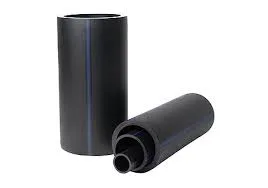ספט . 16, 2024 01:35 Back to list
High-Density Polyethylene (HDPE) Conduit Pipe - Durable & Versatile Solutions
Understanding HDPE Conduit Pipe A Key Component in Modern Infrastructure
High-Density Polyethylene (HDPE) conduit pipes are essential components in various infrastructure projects, particularly in the telecommunications and electrical sectors. Known for their durability and flexibility, HDPE pipes offer a reliable solution for protecting and organizing the cables and wires that serve our modern technological needs.
What is HDPE?
HDPE, or High-Density Polyethylene, is a thermoplastic polymer made from petroleum. It is recognized for its high strength-to-density ratio, making it more suitable for demanding applications compared to other types of plastic. HDPE is known for its impressive resistance to impact, chemicals, and environmental stress, which makes it an ideal material for conduit pipes that require longevity and stability.
Advantages of HDPE Conduit Pipe
1. Durability One of the standout features of HDPE conduit pipes is their ability to withstand harsh environmental conditions. They are resistant to corrosion, UV radiation, and various chemicals, which significantly extends their lifespan compared to traditional materials such as metal or PVC.
2. Flexibility HDPE pipes can be bent without breaking, allowing for easier installation in challenging terrains. This flexibility helps reduce the number of fittings and joints required, minimizing potential points of failure and ensuring smoother installations.
3. Lightweight Compared to other pipe materials, HDPE is lightweight, making handling and installation significantly easier and safer. This attribute also contributes to reduced shipping costs and overall project expenses.
hdpe conduit pipe

4. Environmentally Friendly HDPE is a recyclable material, supporting efforts in sustainability. Using HDPE conduit pipes helps reduce the carbon footprint associated with infrastructure projects, as they can be repurposed at the end of their life cycle.
5. Cost-Effective Although the initial investment in HDPE conduit may be higher than some alternatives, the long-term savings from reduced maintenance and replacement costs can make it a more economical choice. Additionally, the installation process tends to be quicker, saving labor costs.
Applications of HDPE Conduit Pipe
HDPE conduit pipes have a wide range of applications across various industries. They are predominantly used to protect electrical wiring and communication cables, ensuring safe and efficient operation. These pipes are also utilized in underground installations where conduit integrity is crucial, particularly in urban settings where space is limited. From telecommunications networks to electrical distribution systems, HDPE pipes serve as a vital protective layer that enhances the reliability of essential services.
Installation and Maintenance
Installing HDPE conduit pipe is generally straightforward due to its lightweight and flexible nature. The pipes can be installed using conventional trenching or directional boring methods, catering to different project requirements. Maintenance of HDPE conduits is typically minimal, as their resistance to corrosion and damage means they do not require regular upkeep or replacements.
Conclusion
In conclusion, HDPE conduit pipes play a critical role in modern infrastructure, offering numerous advantages in terms of durability, flexibility, and cost-effectiveness. As we continue to advance technologically, the demand for reliable, long-lasting conduit solutions will grow. Understanding the benefits and applications of HDPE conduit pipes is vital for engineers, contractors, and stakeholders in ensuring the success of projects that rely on efficient and dependable infrastructure systems. Embracing innovations such as HDPE is essential in building a sustainable future that meets the needs of our increasingly connected world.
-
Durable PP Rigid Sheet: Lightweight, Chemical Resistant Solutions
NewsAug.21,2025
-
PVC Grey Sheet for Extraction: Chemical Resistant & Durable
NewsAug.19,2025
-
Durable PVC Pipe Fittings for Plumbing & Irrigation Needs
NewsAug.18,2025
-
HDPE Steel Belt Reinforced Spiral Corrugated Pipe | High Strength
NewsAug.17,2025
-
HDPE Pipe Fittings: Durable, Leak-Proof Solutions
NewsAug.16,2025
-
Premium CPVC Sheet: High-Temp & Chemical Resistant Solutions
NewsAug.15,2025

